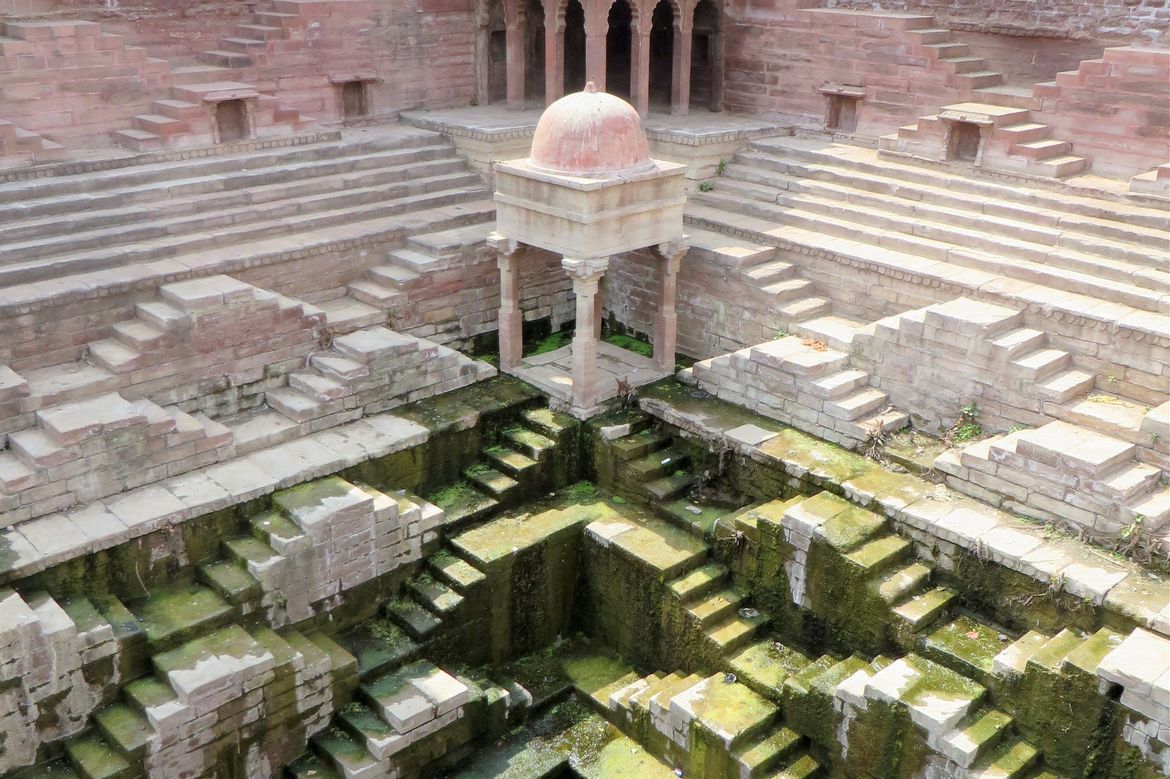A new exhibition at the Fowler Museum at UCLA will feature 48 photographs by journalist Victoria Lautman of monumental manmade water storage systems from India called stepwells, which are also known as baolis, vavs and kunds in various parts of the country.
“India’s Subterranean Stepwells: Photographs by Victoria Lautman,” showcases these magnificent inverted constructions, which extend down to the water table, ranging from three to 13 stories deep. The exhibition opens May 5 and will be on view through Oct. 20.
Villagers, religious pilgrims and transient traders once descended into the stepwells to find clean water and a cool, quiet reprieve from the heat above. Lautman first encountered these subterranean architectural marvels more than 30 years ago, and has since documented more than 200 sites — some preserved as heritage sites and some restored as functioning community wells and active shrines, while others remain forgotten and derelict.
“Palaces, forts, temples, and tombs are on every tourist itinerary and in every guidebook to India,” Lautman said. “The country’s magnificent subterranean stepwells, however, remain largely unknown within and outside the country.”
Stepwells were engineered and constructed from around A.D. 600 This exhibition focuses on documentation of 17 sites, built between the ninth and 18th centuries. As many as 3,000 stepwells once existed across Gujarat, Madhya Pradesh, Rajasthan and Uttar Pradesh, where seasonal monsoonal rains in the parched landscape of northwest India necessitated a water storage system. Often commissioned by wealthy female patrons, stepwells were sites of communal congregation and conviviality open to all, providing water for consumption, cleansing, irrigation and ritual use. Built from brick, rubble or carved sandstone blocks, stepwells were built in Hindu or Islamic architectural styles, sometimes combining both. Post-and-lintel Hindu architecture, with corbeled cupolas and complex sculptural reliefs of Hindu deities dominated prior to 16th-century Mughal rule. Thereafter, Islamic-inspired domes, octagonal shafts, and colonnades with archways proliferated.
Stepwells became obsolete during the early 20th century due to the introduction of piped water and other social changes. India’s critically diminished water table means that many stepwells no longer extend to the groundwater. Nevertheless, some continue to be vibrant sites of worship and community gathering. Increasingly, stepwells are being restored by communities, hotel developers, the Indian National Trust for Art and Cultural Heritage, the Archeological Survey of India, and in one case, the United Nations Educational, Scientific and Cultural Organization, not only in recognition of their architectural beauty and irreplaceability as monuments of India’s rich heritage, but also as potential offsets to India’s water crisis.
“We don’t choose our obsessions — they choose us,” Lautman said. “I could never have predicted that my first encounter with a stepwell would eventually commandeer a large slice of my life, propelling me throughout India in search of the most fascinating and mysterious structures I have ever seen but, until then, had not been aware of.”
Credit
“India’s Subterranean Stepwells: Photographs by Victoria Lautman” is organized by the Fowler Museum at UCLA and is curated by Joanna Barrkman, senior curator of Southeast Asian and Pacific arts.
Related programs
Gallery Talk: Victoria Lautman on Indian stepwells
Friday, May 17, noon
Journalist, author and lecturer Victoria Lautman shares her experiences over 30 years of documenting stepwells across India. These remarkable structures provided communities with water all year long and served as civic centers, refuges, and active places of worship.
Lecture: Victoria Lautman on the vanishing stepwells of India
Sunday, June 23, 2 p.m.
India’s palaces, forts, temples, and tombs are on every tourist itinerary and in every guidebook. The country’s magnificent subterranean stepwells, however, remain largely unknown within and outside the country. Lautman traces the history of these astonishing structures in her lecture. A book signing and light refreshments follow the program.




